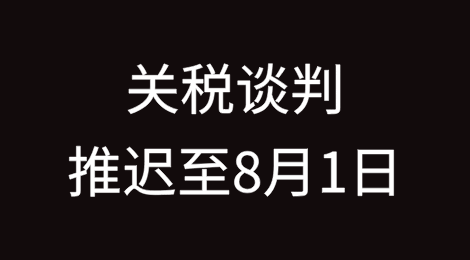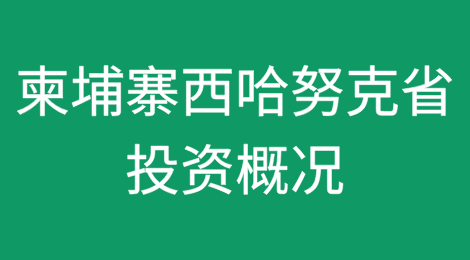《2023年美国联邦司法年终报告》

本文转自涉外法律圈,作者孙旭东|Sheldon,版权归原作者所有,侵删
在探讨法律与技术交汇的新时代,尤其是人工智能(AI)在法律领域应用的影响,近期《2023年美国联邦司法年终报告》提供了深刻的洞察。它回顾了从过去使用鹅毛笔、打字机,到现代个人电脑和数字化文档制作的演变。特别提到了如何从大型固定计算机向便携个人电脑的过渡,以及数字化对法律研究和法院运作的影响,还着重讨论了人工智能(AI)在法律领域的应用及其带来的机遇与挑战。
《2023年美国联邦司法年终报告》详细地探讨了AI在法律行业中的应用,并对其带来的重大变革给予了特别关注。它指出,AI通过其高级算法和庞大的数据集,不仅改变了法律研究的方式,而且对法律实践产生了深远的影响。
同时《2023年美国联邦司法年终报告》着重强调了AI在提升法律服务可及性方面的巨大潜力,特别是对于资源有限的当事人。AI驱动的工具能回答基本的法律问题,如寻找模板和填写法院表格的指导,这些都大大降低了法律服务的门槛。然而,报告同时也提出了对AI的担忧,特别是在隐私侵犯、潜在偏见和法律人性化方面的问题。
在刑事司法领域,报告指出AI在评估逃逸风险和累犯概率等方面的应用可能对正当程序、可靠性和公平性构成挑战。此外,报告还提到了AI在法律判决中可能出现的“幻觉”错误,例如引用不存在的案例,这提示我们在采用这一技术时必须格外谨慎。
《2023年美国联邦司法年终报告》最后强调,尽管AI在法律领域具有巨大的潜力,但当前和未来的法律专业人士需要在利用AI的同时,保持对这些技术的深思熟虑和谨慎态度。
这份报告为我们提供了一个宝贵的视角,让我们能够理解AI如何重塑法律行业,同时也指出了它带来的伦理和实践挑战。
我们看到报告原文后觉得里面的内容具备学习价值,所以翻译出来给大家作为详细参考资料,如果你想获得原版英文材料,可以关注公众号,后台私信小编(微信:MarsLegalX)进行获取。
关于《2023年美国联邦司法年终报告》中Appendix Workload of the Courts(附录:法院工作一览),我们放在周四的文章中给大家以图表的形式详细呈现,敬请期待。
《2023 Year-End Report on the Federal Judiciary》
《2023年美国联邦司法年终报告》
原文:Sometimes, the arrival of new technology can dramatically change work and life for the better. Just one century ago, for example, fewer than half of American homes had electricity. During the New Deal, the federal government set out to “bring the light” to homes across rural America. Representatives recruited farmers to join electricity co-operatives for $5 each. Then came teams of men to clear the brush, sink the poles, and wire homes to the still inert grid.
译文:有时,新技术的到来能显著改善工作和生活。比如一个世纪前,美国不到一半的家庭拥有电力。在新政时期,联邦政府开始“为农村美国的家庭带来光明”。他们招募农民以每人5美元加入电力合作社。接着,工作队伍开始清理灌木、立电杆并将家庭接入尚未启动的电网。
原文:As Robert Caro relates in The Path to Power, in some places the project took so long that many forgot about it, or were certain they had been duped. But eventually there were stories like Evelyn Smith’s to be told:“[O]ne evening in November, 1939, the Smiths were returning from Johnson City, where they had been attending a declamation contest, and as they neared their farmhouse, something was different. ‘Oh my God,’ Evelyn’s mother said. ‘The house is on fire!’ But as they got closer, they saw the light wasn’t fire. ‘No, Mama,’ Evelyn said. ‘The lights are on.’”¹
译文:罗伯特·卡罗在《权力之路》一书中描述,有些地方这个项目进行得如此缓慢以至于许多人都忘记了它,或者确信他们被欺骗了。但最终,像伊夫林·史密斯的故事这样的事情还是发生了:
“1939年11月的一个晚上,史密斯一家从约翰逊市回来,在那里他们参加了一个朗诵比赛。当他们靠近自己的农舍时,感觉有些不同。‘天哪,’伊夫林的妈妈说,‘房子着火了!’但当他们走近时,他们看到那光并不是火。‘不,妈妈,’伊夫林说,‘灯亮了。’”¹
原文:But not every story of technological investment ends brightly, as Mark Twain discovered financing the “Paige Compositor.” A typesetting device, the elaborate Compositor consisted of 18,000 parts and came with a patent application longer than The Adventures of Tom Sawyer. Twain was entranced by the invention, committing most of his fortune to bringing it to market. Unfortunately for Twain, the Compositor was too complex to commercialize. Twain’s company went bankrupt.² And according to at least one account, both the attorney who drafted the patent application and one of the officials who examined it ended up dying in an insane asylum.³
译文:但并非每个技术投资的故事都有一个光明的结局,正如马克·吐温在资助“佩奇排字机”时所发现的那样。这种排字设备复杂精细,由18,000个部件组成,其专利申请的长度甚至超过了《汤姆·索亚历险记》。吐温被这项发明迷住了,投入了他大部分的财富来推向市场。不幸的是,对于吐温来说,佩奇排字机过于复杂,无法商业化。吐温的公司破产了²。而且据至少一份报道称,起草专利申请的律师和其中一名审查官员最终都疯了,死在了疯人院³。
原文:Thirty-five years ago, the Federal Judiciary began to take tentative steps into the modern era of information technology: In 1989, the branch finally supplied personal computers to secretaries in all judges’ chambers and ensured that there was at least one personal computer to be shared by each judge’s law clerks. New tools to make court information available to the public were rolling out, too. That same year, courts launched the Voice Case Information System (VCIS) with pilot tests in four bankruptcy courts. As it was explained to judges: “By using a touch-tone telephone, members of the public can connect to the court’s computer voice synthesis device which reads back case information to the caller from the court’s database.” (A successor to VCIS still exists, by the way: If you would like to travel back in technological time—and get current case information by phone—you can call 1-866-222-8029).
译文:三十五年前,联邦司法系统开始踏入现代信息技术的初步步伐:1989年,该部门终于为所有法官办公室的秘书提供了个人电脑,并确保每位法官的法律助理至少共享一台个人电脑。新工具也在推出,以便向公众提供法院信息。同年,法院推出了语音案件信息系统(VCIS),在四个破产法院进行了试点测试。正如向法官们解释的那样:“通过使用按键式电话,公众可以连接到法院的计算机语音合成设备,该设备会从法院的数据库中读回案件信息给来电者。”(顺便说一句,VCIS的后继者仍然存在:如果您想回到技术的过去——并通过电话获取当前的案件信息——您可以拨打1-866-222-8029)。
原文:Those of us who marveled at new, bulky, early personal computer systems in legal workplaces could hardly have anticipated today’s ubiquitous conversations about whether and when computers might replace all sorts of professions—not least, lawyers. Every year, I use the Year-End Report to speak to a major issue relevant to the whole federal court system. As 2023 draws to a close with breathless predictions about the future of Artificial Intelligence, some may wonder whether judges are about to become obsolete. I am sure we are not—but equally confident that technological changes will continue to transform our work.
译文:我们这些曾对法律工作场所里新颖而笨重的早期个人电脑系统感到惊叹的人,几乎无法预料到今天关于计算机何时可能取代各种职业的无处不在的讨论——尤其是律师。每年,我都会利用年终报告来讨论与整个联邦法院系统相关的一个重大问题。随着2023年接近尾声,人们对人工智能未来的预测让人屏息,一些人可能会怀疑法官是否即将变得过时。我确信我们不会——但同样确信技术变革将继续改变我们的工作。
原文:The legal profession is, in general, notoriously averse to change. For most of our Nation’s first century, lawyers and judges produced their work with quill pens. Still today, as has been the custom for more than two centuries, the Clerk of the Supreme Court sets out white goose quill pens at counsel table before each oral argument. Symbols of tradition and timelessness, the quill pens go home as treasured souvenirs of each appearance before the highest court in the land. But the Court has taken away the inkwells that once sat beside quill pens, recognizing that the pens now serve only a symbolic function. Like the rest of society, if not quite as quickly, the federal judiciary has adapted its practices to meet the opportunities and challenges of new technologies.
译文:法律行业总体而言,是出了名的抗拒变化。在我们国家的头一个世纪里,律师和法官们都是用鹅毛笔来完成他们的工作。即便在今天,作为两个多世纪以来的传统,每次口头辩论前,最高法院的书记员都会在律师桌前摆放白色的鹅毛笔。这些鹅毛笔作为传统和永恒的象征,在最高法院出庭后成为每位出庭人员珍视的纪念品。但是,法院已经撤掉了曾经摆放在鹅毛笔旁边的墨水瓶,认识到这些笔现在只具有象征性的功能。就像社会的其他部分一样,尽管速度不那么快,联邦司法系统也已经调整了其实践,以适应新技术带来的机遇和挑战。
原文:The transition to more modern forms of document production began 150 years ago, with the appearance of the Sholes & Glidden Type Writer, first manufactured in 1873 and famous shortly thereafter as the Remington. Most judges still wrote their drafts by hand, but the typewriter became an important tool in the dissemination of judicial opinions both internally and to the outside world. In 1905, Justice David Brewer somewhat ungenerously referred to his law clerk as “a typewriter, a fountain pen, used by the judge to facilitate his work.”⁴ Until the invention of the Dictaphone, law clerks of this vintage also had to take dictation, and at least one otherwise well qualified law clerk lost his job due to “lack of stenographic knowledge.”⁵
译文:大约150年前,随着肖尔斯与格里登打字机的出现,法律文件生产开始向更现代的形式过渡。这种打字机最初在1873年生产,并很快以雷明顿的名字而闻名。大多数法官仍然手写草稿,但打字机成为了法官意见在内部和对外传播中的重要工具。1905年,大法官大卫·布鲁尔有些不够慷慨地将他的法律助理称为“打字机,钢笔,用来帮助法官工作”⁴。在留声机发明之前,这个时代的法律助理还必须进行听写,至少有一位资质良好的法律助理因为“缺乏速记知识”而失去了工作⁵。
原文:The typewriter era lasted a century. On cue, fifty years ago a device called the Altair appeared on the market. Many historians consider the Altair to have been the first personal computer. It marked a significant step in the transition from large, stationary computers, like the Sperry Univac, housed in corporate and university buildings, to small, mobile devices designed for personal use in offices and living rooms.
译文:打字机时代持续了一个世纪。恰在五十年前,一种名为Altair的设备出现在市场上。许多历史学家认为Altair是第一台个人电脑。它标志着从大型、固定的电脑(如安置在公司和大学建筑中的Sperry Univac)向小型、便携设备的转变,这些小型设备是为在办公室和客厅中个人使用而设计的。
原文:While many professions eagerly anticipated advances in computing, the prevailing attitude within the judiciary was skepticism. As one contemporary author observed, “The archaic courts know nothing of computers.”⁶ That was largely true. In fact, the Supreme Court did not even have a photocopy machine until Chief Justice Warren E. Burger ordered one in 1969. Until that time, opinions and memoranda between the Justices were typed, often on carbon paper, and then duplicated on a hot-lead printing press that was not retired until the 1980s.
译文:尽管许多行业热切期待计算机技术的进步,但司法界普遍的态度却是持怀疑态度。正如一位当代作者所观察的,“陈旧的法院对计算机一无所知。”⁶这在很大程度上是事实。实际上,直到1969年沃伦·E·伯格首席大法官下令购买一台复印机之前,最高法院甚至都没有复印机。在那之前,大法官之间的意见和备忘录都是打字机打印的,通常使用复写纸,然后在热铅印刷机上复制,直到1980年代才被淘汰。
原文:The lower courts, guided by the newlycreated Federal Judicial Center, moved more quickly to bring computer technology into the federal judiciary, primarily through a system called “Courtran.” The development of Courtran implemented a 1967 congressional directive that the Center “study and determine ways in which automatic data processing and systems procedures may be applied to the administration of the courts of the United States.” Courtran relied on the use of large computers in Washington, D.C., to store and manipulate data, which then could be transmitted and displayed on terminals in local courts across the country. Participation in the network was voluntary, and not all courts opted in.
译文:由新成立的联邦司法中心指导的下级法院更快地将计算机技术引入联邦司法系统,主要是通过一个名为“Courtran”的系统。Courtran的开发实施了1967年国会的指令,要求中心“研究并确定自动数据处理和系统程序如何应用于美国法院的管理。” Courtran依赖于在华盛顿特区使用的大型计算机来存储和处理数据,然后可以通过终端传输并在全国各地的地方法院显示。参与网络是自愿的,并非所有法院都选择加入。
原文:Computers came slowly but surely to the Supreme Court. In 1976, Justice Lewis Powell deployed a rented Wang computer in his chambers. Several other Justices observed the satisfactory performance of this newfangled “word processing machine” and followed suit the next year. By 1981, the Court adopted a state-of-the-art computer system called Atex that revolutionized the production of opinions from start to finish, leading to the eventual retirement of the hot press.
译文:计算机缓慢但稳定地进入了最高法院。1976年,刘易斯·鲍威尔大法官在他的办公室部署了一台租来的王牌计算机。其他几位大法官观察到这种新式“文字处理机”的令人满意的性能,并在次年效仿。到1981年,法院采用了一种名为Atex的尖端计算机系统,该系统彻底改变了意见书的制作流程,从而最终导致热印刷机的退役。
原文:The 1980s saw a proliferation of personal computers in ordinary offices and households. By the early 1990s, most lawyers, law clerks, court administrators, and yes, even judges, had them on their desks. Nevertheless, paper remained the rule of the day. Law clerks and law librarians of that era will recall directives to “pull” cases from hardbound case reporters. Legal writing instructors taught their students to check the continuing validity of precedents by sifting through bound volumes of a publication called Shepards. (Lawyers facing a deadline might skip this stage, proclaiming that “the Lord is my Shepards.”)
译文:20世纪80年代见证了个人电脑在普通办公室和家庭中的广泛普及。到了1990年代初,大多数律师、法律助理、法院管理员,甚至是法官,都在他们的桌子上放有这些设备。尽管如此,纸质文件仍然是当时的主流。那个时代的法律助理和法律图书管理员会回忆起这样的指示:“从精装案例报告书中抽取案例”。法律写作讲师教导他们的学生通过翻阅一种名为Shepards的精装出版物来检查先例的持续有效性。(面临截止期限的律师可能会跳过这个步骤,宣称“主是我的Shepards。”)
原文:Once finalized, briefs and motions made their way from the office to the courthouse in the hands of couriers, carrying the number of hard copies required under local rules and individual judges’ standing orders, plus one or two more to be stamped and returned to the (paper) file. Judicial staff still maintained docket entries in the same large handwritten diaries used by their predecessors a century earlier. And anyone looking to obtain a document from a case file had to travel to a clerk’s office, request the file, inspect it, and then pay a cashier for any copies they wished to make.
译文:一旦完成,诉状和动议就通过快递员从办公室送到法院,携带着根据当地规则和各位法官的常规命令所要求的硬拷贝数量,外加一到两份用于盖章并归档的副本。司法工作人员仍然使用与一个世纪前的前辈们相同的大型手写日记来维护案件登记条目。任何希望从案件档案中获取文档的人都必须前往书记员办公室,请求查看档案,然后支付给收银员以复制他们所需的任何文件。
原文:But change came fast. By the turn of the century, the paper world familiar to lawyers for centuries had largely given way to today’s electronic regime. The Public Access to Court Electronic Records (PACER) system, which celebrated its 35th anniversary a few months ago, allowed lawyers, litigants, and the public to view the business of the courts from their office or library computer terminals. About a decade later, the digital revolution in the federal courts pressed forward with the unveiling of a system called Case Management/Electronic Case Files (CM/ECF). CM/ECF brought about a seismic shift in efficiency. Lawyers, law clerks, and judges could file pleadings and other court documents any time of day or night and from any location, rendering paper largely optional.
译文:但变革来得很快。到了世纪之交,律师们几个世纪以来熟悉的纸质世界在很大程度上已经让位于今天的电子体制。几个月前庆祝了35周年纪念的法院电子公共记录访问系统(PACER),使律师、当事人和公众能够从办公室或图书馆的计算机终端查看法院的业务。大约十年后,联邦法院的数字革命以揭幕一个名为案件管理/电子案件档案(CM/ECF)系统为标志,继续向前推进。CM/ECF带来了效率的巨大转变。律师、法律助理和法官可以在一天中的任何时间、从任何地点提交诉状和其他法庭文件,使得纸质文件大大减少了必要性。
原文:New technology also entered law offices and courtrooms. Digitalization and technologyassisted review (TAR) help lawyers cope with the explosion of electronic discovery materials created and preserved in the digital age. Instead of poring through boxes of papers in dusty warehouses, lawyers now perform document review from their offices—or even their dining room tables.
译文:新技术也进入了律师事务所和法庭。数字化和技术辅助审查(TAR)帮助律师应对在数字时代创建和保存的电子发现材料的爆炸式增长。律师现在不再需要在尘土飞扬的仓库里翻阅成箱的文件,而是可以在办公室或甚至餐桌上进行文件审查。
原文:Trials also look very different today than they did even a decade ago. Trial presentation software, real-time court reporting, accommodations for jurors, litigants, and spectators with disabilities, and many other applications have radically changed how lawyers present and jurors receive evidence in court.
译文:与十年前相比,今天的审判也有了很大的不同。审判展示软件、实时法庭记录、为陪审员、当事人和残疾观众提供的便利设施,以及许多其他应用,已经彻底改变了律师在法庭上呈现证据以及陪审员接收证据的方式。
原文:The COVID-19 pandemic ushered in yet another wave of rapid technological innovation. Courts at all levels of the judiciary immediately shifted from in-person to remote hearings in civil cases. With the adoption of the CARES Act, many criminal proceedings also shifted online. Key innovations first adopted as temporary have now become permanent features of the legal landscape, allowing litigants, lawyers, and courts to lock in efficiency gains that do not undercut other important legal or constitutional rights.
译文:COVID-19大流行引发了另一波快速的技术创新。各级司法机构立即从面对面听证会转移到民事案件的远程听证。随着《关怀法案》的通过,许多刑事程序也转移到了线上。最初作为临时措施采用的关键创新如今已成为法律领域的永久特征,使当事人、律师和法院能够锁定效率提升,同时不损害其他重要的法律或宪法权利。
原文:And now we face the latest technological frontier: artificial intelligence (AI). At its core, AI combines algorithms and enormous data sets to solve problems. Its many forms and applications include the facial recognition we use to unlock our smart phones and the voice recognition we use to direct our smart televisions. Law professors report with both awe and angst that AI apparently can earn Bs on law school assignments and even pass the bar exam. Legal research may soon be unimaginable without it. AI obviously has great potential to dramatically increase access to key information for lawyers and non-lawyers alike. But just as obviously it risks invading privacy interests and dehumanizing the law.
译文:现在,我们面临着最新的技术前沿:人工智能(AI)。在其核心,AI结合了算法和庞大的数据集来解决问题。它的许多形式和应用包括我们用来解锁智能手机的面部识别和用来指导智能电视的语音识别。法律教授们既敬畏又忧虑地报告说,AI显然可以在法学院的作业中获得B级成绩,甚至通过律师资格考试。没有它,法律研究很快可能就难以想象。显然,AI对于律师和非律师一样,极大地提升获取关键信息的途径具有巨大潜力。但同样明显的是,它可能侵犯隐私权益并使法律人性化。
原文:Proponents of AI tout its potential to increase access to justice, particularly for litigants with limited resources. Our court system has a monopoly on many forms of relief. If you want a discharge in bankruptcy, for example, you must see a federal judge. For those who cannot afford a lawyer, AI can help. It drives new, highly accessible tools that provide answers to basic questions, including where to find templates and court forms, how to fill them out, and where to bring them for presentation to the judge—all without leaving home. These tools have the welcome potential to smooth out any mismatch between available resources and urgent needs in our court system.
译文:人工智能的支持者们宣扬其增加司法公正获取途径的潜力,特别是对于资源有限的当事人。我们的法院系统在许多形式的救济上拥有垄断地位。例如,如果你想获得破产豁免,就必须见联邦法官。对于那些负担不起律师费的人来说,人工智能可以提供帮助。它推动了新的、高度易于获取的工具,提供基本问题的答案,包括在哪里找到模板和法院表格,如何填写它们,以及在哪里提交给法官——所有这些都无需离开家门。这些工具有望平衡我们法院系统中现有资源和紧迫需求之间的不匹配,这是一个受欢迎的潜力。
原文:But any use of AI requires caution and humility. One of AI’s prominent applications made headlines this year for a shortcoming known as “hallucination,” which caused the lawyers using the application to submit briefs with citations to non-existent cases. (Always a bad idea.) Some legal scholars have raised concerns about whether entering confidential information into an AI tool might compromise later attempts to invoke legal privileges. In criminal cases, the use of AI in assessing flight risk, recidivism, and other largely discretionary decisions that involve predictions has generated concerns about due process, reliability, and potential bias. At least at present, studies show a persistent public perception of a “human-AI fairness gap,” reflecting the view that human adjudications, for all of their flaws, are fairer than whatever the machine spits out.
译文:但使用人工智能需要谨慎和谦卑。人工智能的一个突出应用今年因为一种称为“幻觉”的缺陷而成为头条新闻,这导致使用该应用的律师提交了引用不存在案例的诉状。(这永远是个坏主意。)一些法律学者对将机密信息输入人工智能工具可能会影响以后试图援引法律特权的尝试表示担忧。在刑事案件中,使用人工智能评估逃跑风险、累犯可能性以及其他主要依赖预测的自由裁量性决定,已引发了关于正当程序、可靠性和潜在偏见的担忧。至少目前为止,研究显示公众对“人类-AI公正差距”的持续感知,反映了这样一种观点,即尽管存在缺陷,人类的裁决比机器输出的任何结果都更公正。
原文:Many professional tennis tournaments, including the US Open, have replaced line judges with optical technology to determine whether 130 mile per hour serves are in or out. These decisions involve precision to the millimeter. And there is no discretion; the ball either did or did not hit the line. By contrast, legal determinations often involve gray areas that still require application of human judgment.
译文:许多专业网球赛事,包括美国公开赛,已经用光学技术替换了线裁,以确定时速130英里的发球是界内还是界外。这些决定涉及到毫米级的精确度。而且这里没有自由裁量权;球要么打在了线上,要么没有。相比之下,法律判决往往涉及灰色地带,仍然需要人类判断的应用。
原文:Machines cannot fully replace key actors in court. Judges, for example, measure the sincerity of a defendant’s allocution at sentencing. Nuance matters: Much can turn on a shaking hand, a quivering voice, a change of inflection, a bead of sweat, a moment’s hesitation, a fleeting break in eye contact. And most people still trust humans more than machines to perceive and draw the right inferences from these clues.
译文:机器不能完全取代法庭中的关键参与者。例如,法官在判决时评估被告人陈述的真诚度。细微之处很重要:许多情况可能取决于手的颤抖、声音的颤动、语调的变化、额头的汗珠、犹豫的瞬间、短暂的眼神交流中断。而且大多数人仍然更信任人类而不是机器去察觉这些线索并作出正确的推断。
原文:Appellate judges, too, perform quintessentially human functions. Many appellate decisions turn on whether a lower court has abused its discretion, a standard that by its nature involves fact-specific gray areas. Others focus on open questions about how the law should develop in new areas. AI is based largely on existing information, which can inform but not make such decisions.
译文:上诉法官也执行本质上属于人类的职能。许多上诉决定取决于下级法院是否滥用了其裁量权,这一标准本质上涉及具体事实的灰色地带。其他决定则聚焦于法律在新领域发展的开放性问题。人工智能主要基于现有信息,这可以提供信息但不能做出这类决定。
原文:Rule 1 of the Federal Rules of Civil Procedure directs the parties and the courts to seek the “just, speedy, and inexpensive” resolution of cases. Many AI applications indisputably assist the judicial system in advancing those goals. As AI evolves, courts will need to consider its proper uses in litigation. In the federal courts, several Judicial Conference Committees—including those dealing with court administration and case management, cybersecurity, and the rules of practice and procedure, to name just a few—will be involved in that effort.
译文:《联邦民事诉讼规则》的第1条指示当事人和法院寻求案件的“公正、迅速和低成本”解决。许多人工智能应用无疑帮助司法系统实现这些目标。随着人工智能的发展,法院将需要考虑其在诉讼中的适当用途。在联邦法院,包括那些处理法院管理和案件管理、网络安全以及实践和程序规则等的司法会议委员会,将参与这一努力。
原文:Of course, the branch is composed of more than judges, and I would like to single out for praise this year the skilled and dedicated information systems professionals who support our courts. They are often unsung public servants performing indispensable work to keep the judicial branch running. Gone are the days when the quill pen alone was sufficient to maintain a docket; courts could not do our work without technologists and cybersecurity experts in the Department of Technology Services at the Administrative Office of the U.S. Courts, at the circuit-wide level, and in individual courts. More parochially, judges, including me, have been known to call on help desk staff for urgent and essential assistance.
译文:当然,司法部门不仅仅由法官组成,今年我想特别表扬支持我们法院的技术和专业的信息系统专家们。他们常常是默默无闻的公职人员,执行着对保持司法部门运转至关重要的工作。已经一去不复返的是,仅靠鹅毛笔就能维护案件登记的日子;如果没有美国法院行政办公室、电路级别以及各个法院的技术专家和网络安全专家,法院无法开展我们的工作。更具体地说,包括我在内的法官们,已经知道在紧急和必要时向服务台工作人员寻求帮助。
原文:Once again, I am privileged and honored to thank all the judges, court staff, and other judicial branch personnel throughout the Nation for their outstanding service.
Best wishes to all in the New Year.
John G. Roberts, Jr.
Chief Justice of the United States December 31, 2023
译文:
再一次,我感到非常荣幸和光荣地感谢全国各地的所有法官、法院工作人员和其他司法部门人员,感谢他们的杰出服务。
新的一年祝福大家。
小约翰·G·罗伯茨
美国首席大法官 2023年12月31日
注释: [1]R. Caro,《林登·约翰逊的岁月:通往权力之路》528页(1982年);参见同书52-53页,516-529页。 [2]R. K. Rasmussen,《马克·吐温批判伴侣:他的生活和作品的文学参考》827-828页(2007年)。 [3]《马克·吐温生活中的一件事》,《排字工人杂志》第70卷,第625-626页(1927年5月)。 [4]C. Cushman,《白宫时代“失落”的书记员》,收录于《宫廷人员与国王》第15页(T. C. Peppers与C. Cushman 编,2015年)。 [5]同上,第18页。 [6]A. Pantages,《混乱中无荣耀》,《法律计量学杂志》第12卷,第193页(1972年)。











